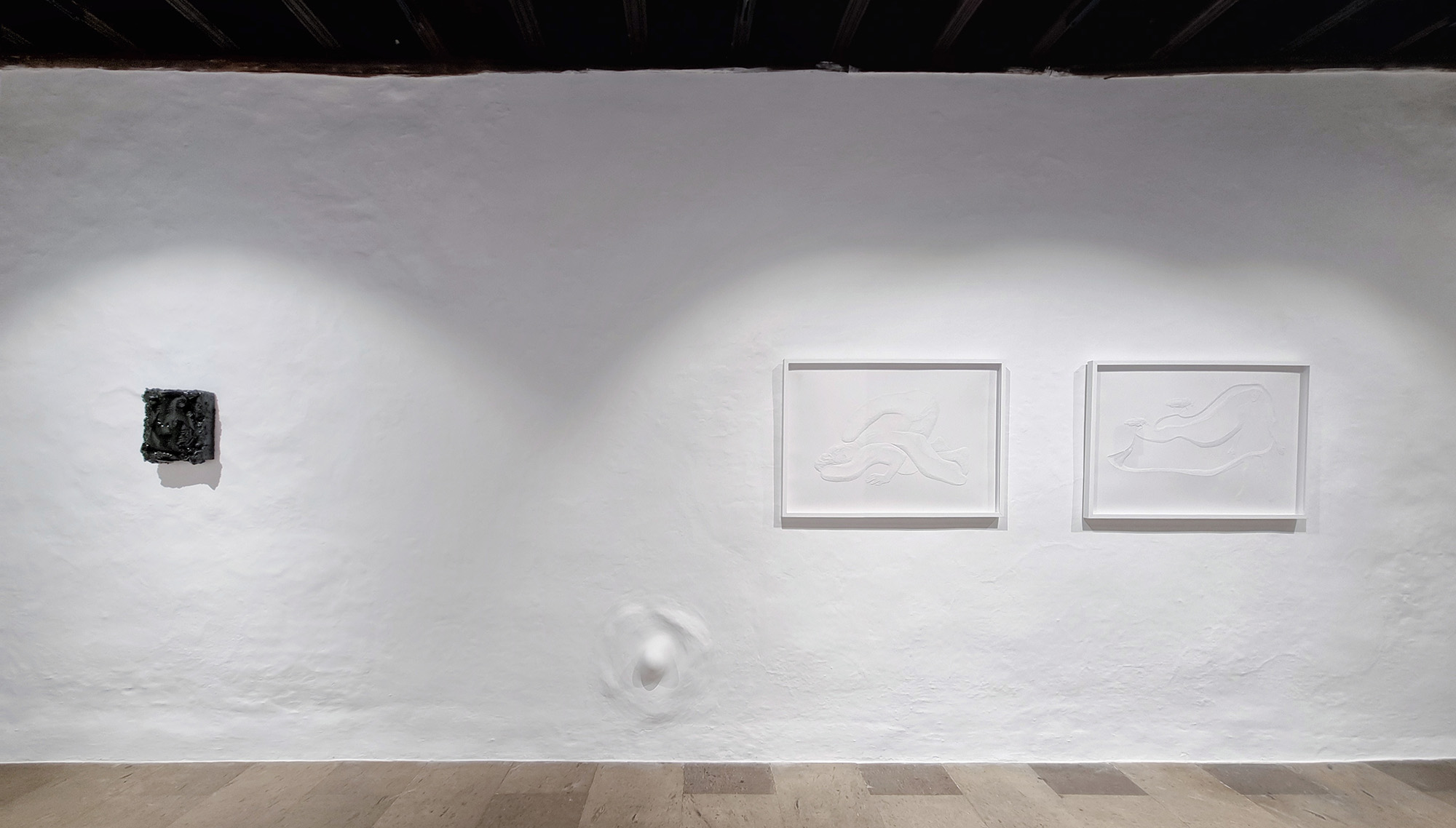Dentro, detrás, al otro lado
Fernando Gómez de la Cuesta
Anyone who has been following the career of Amparo Sard closely will have noticed that her explorations often delve into those eccentric areas that lie on the thresholds, where ideas start to lose their consistency and concepts start to become not as they appear. Ambiguous places of collision, spaces for doubt, experimentation, and knowledge, in which different thoughts wear each other down, brush against, repel, and collide with one another, but also connect, nourish, and grow. The easiest and most common course of action, although probably not the most accurate or the most real, is to turn towards the core of those terms, the hardest, most concrete, almost immovable part, which serves to establish unalterable definitions of all those aspects that concern us, of all that we need to understand and fix in order to live. A reticular structure that, instead of providing us with the intended stability, the desired sure-footedness so that we can move forwards, limits us, and confines us in its stagnation, in its inability to adapt, in its lack of speed and dynamism. Somewhat strict coordinates, which are far from the complex, flexible and changing drift of times.
Χάος is what we have experienced through denial: what we are shown without appearing, as pure negativity, as threat. And yet it is a weight, something that has density, something that forces the entry of our subjectivity and that, in opening, leaves only darkness.
Chantal Maillard – La razón estética

Amparo Sard is a clairvoyant creator who has clearly perceived this continuous mutation in which we are immersed, the paralysis of those core conventions that, protected by layers and layers of sediments, no longer appropriately define the idea that contains them. Nothing is explained any longer by that seed kept as a treasure that contains a purported truth. We can barely find a grain of truth in that steadfast witness as it passes down outdated, conditioning, and pre-established knowledge from one generation to the next. Indeed, Sard is fully aware that we must not go to the core if we are seeking a definition, but instead to those border areas where ideas become taut and strained, where statements begin to question one other. Irregular, external, sprawling landscapes, which take to the extreme the concept from which they emanate, which they put to the test, forcing it in order to uncover its true dimension, its scope, its multiple forms and contents. It is in those places found on the limits that we can find the artist, her work, her interests, and her life.

In Exhalar y engullir [Exhaling and devouring], Amparo Sard converts the organic cavernous space of Artizar into one of those interstitial zones that connect diverse realities. A threshold space that offers a more patent connection between what is behind, what is inside, and what is on the other side. The holes that appear on the wall transform the white walls of the gallery into sculptures, into strange organisms that ooze matter while linking different dimensions through their openings. The creator plunges her hands into those holes, thrusts her arms through them to cause a dismemberment that turns her limbs into food, sharing pieces of her self with all those who decide to devour them. The artist is self-represented in her drawings, trepanned by emptiness, as if all that remained of her was a hollow shell, as if all that remained of us was an abyss. In this exhibition, just as she offers us the intimate process of her sculpture and drawing, she also chooses to lift the veil on her painting, showing us its bowels, revealing the flesh under the appearance, that mass with the appearance of being alive that shows us its guts, that work which, in an act of true creation, has been devoured, exhaled, and devoured.
Featured in the Cronos program of Televisión Canaria
Featured on Spanish Television News
Written press
Article in the Plataforma de Arte Contemporáneo portal
Article in the newspaper El Día - November 8, 2021
Article in the newspaper Diario de Avisos - October 30, 2021
